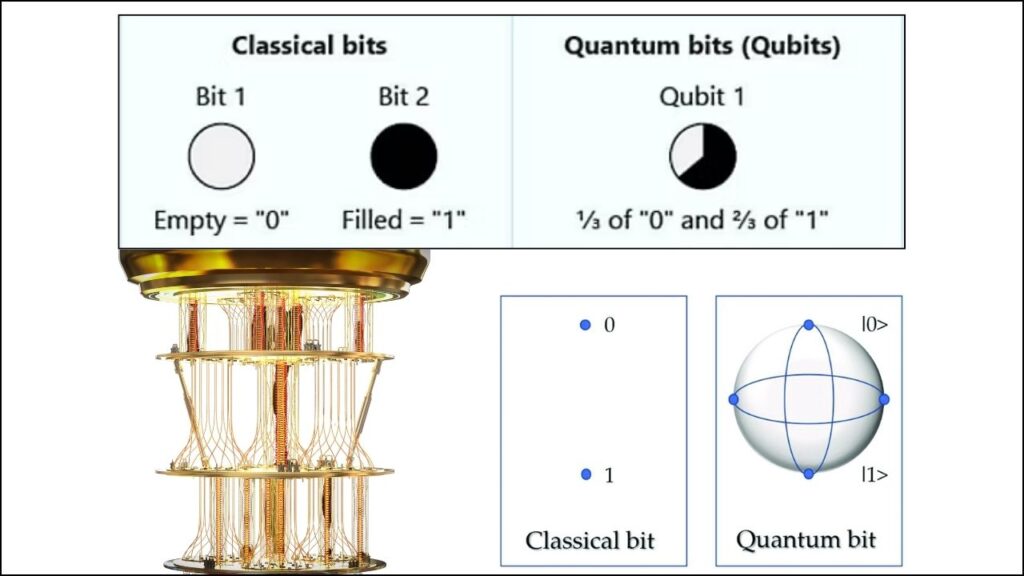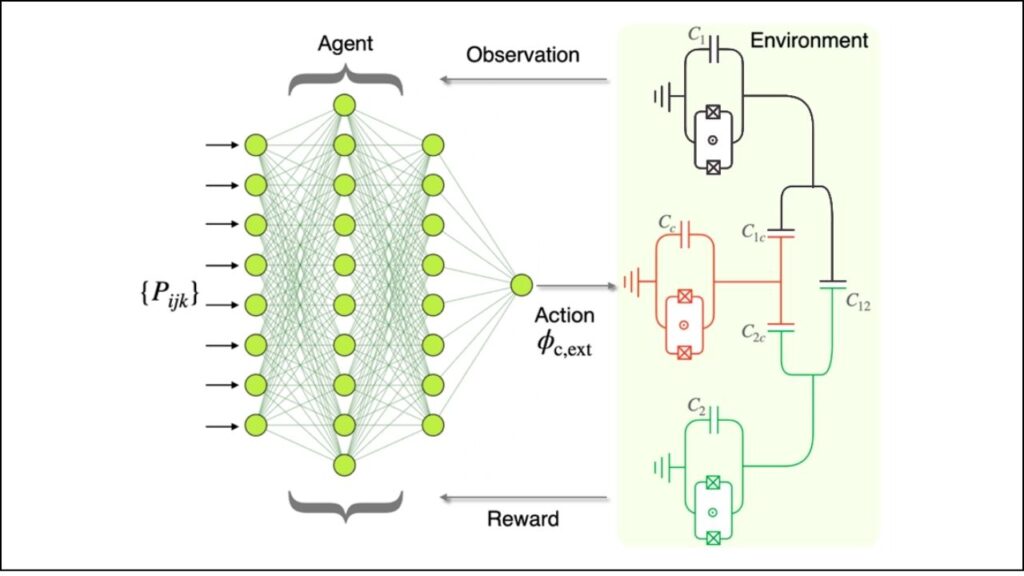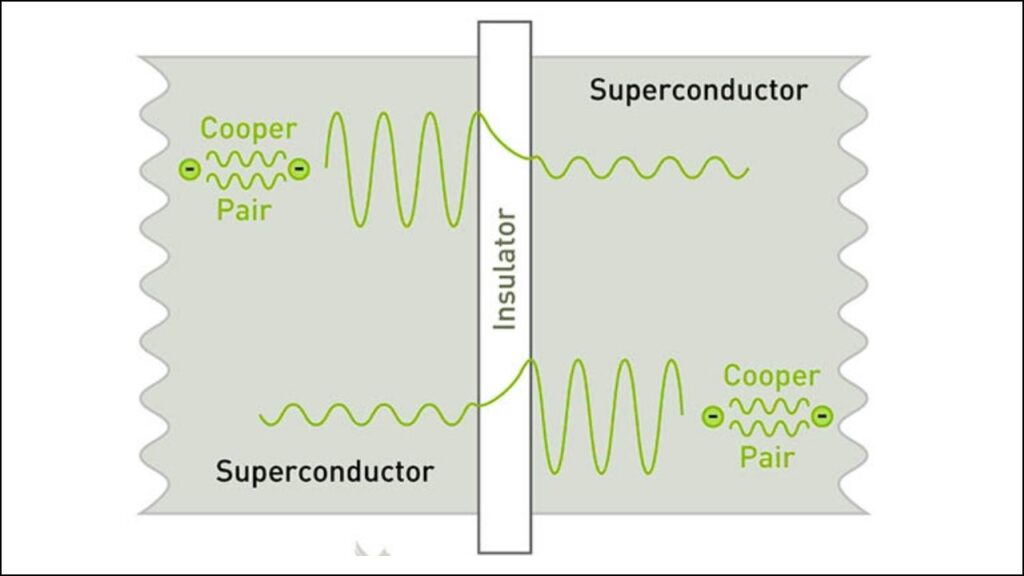Physicists Build a Tunable Quantum Gate: Physicists build a tunable quantum gate that could redefine future computing—this headline is more than just exciting news for scientists; it’s a development that could eventually impact everything from cybersecurity to medicine. But what is a tunable quantum gate?

Why is it so important for the future of computers? And how close are we to seeing these breakthroughs change our daily lives? Let’s dive into the details in a way that’s both easy to understand and valuable for professionals.
Physicists Build a Tunable Quantum Gate
| Feature/Topic | Details & Stats |
|---|---|
| Breakthrough | Tunable quantum gate for superconducting qubits |
| Gate Fidelity | 99.92% (two-qubit CZ gate), 99.98% (single-qubit gate) |
| Core Technology | Double-transmon coupler (DTC), Josephson junctions |
| Quantum Computing Market | Projected to reach tens of billions USD by 2040 |
| Professional Opportunities | Quantum hardware, software, algorithm design, cryptography, AI, pharma, finance |
| Official Resource | IBM Quantum Computing |
The creation of a tunable quantum gate with record-setting fidelity is a milestone that could truly redefine the future of computing. By making quantum operations more reliable, adaptable, and scalable, this breakthrough brings us closer to practical quantum computers that could revolutionize industries from medicine to cybersecurity. Whether you’re a student, a professional, or simply curious about the future, now is the perfect time to start learning about quantum computing and explore the opportunities this exciting field has to offer.
Understanding Quantum Computing: The Next Frontier
Quantum computing is a revolutionary approach to processing information. Unlike classical computers, which use bits (either 0 or 1), quantum computers use qubits. Qubits can be both 0 and 1 at the same time, thanks to the principles of quantum mechanics. This allows quantum computers to perform complex calculations much faster than classical computers for certain problems.

The Magic of Qubits
Imagine flipping a coin. While it’s spinning in the air, it’s not just heads or tails—it’s both. That’s a bit like how a qubit works, using a property called superposition. But there’s more: when qubits are connected, or entangled, the result is a system where changing one qubit instantly affects the other, no matter how far apart they are. This is the secret sauce that gives quantum computers their incredible potential.
What Is a Tunable Quantum Gate?
The Basics of Quantum Gates
Just as classical computers use logic gates (like AND, OR, NOT) to process information, quantum computers use quantum gates to manipulate qubits. Quantum gates can create superpositions, entangle qubits, and perform the basic operations that make quantum algorithms possible.

What Makes a Gate “Tunable”?
A tunable quantum gate is a special kind of quantum gate whose strength and behavior can be adjusted or “tuned” on demand. This flexibility is crucial for building larger, more reliable quantum computers. The newly developed gate uses a double-transmon coupler (DTC)—an advanced superconducting circuit that connects two qubits and allows precise control over their interaction.
Why Is This Important?
- High Fidelity: The new gate achieves a fidelity of 99.92% for two-qubit operations. High fidelity means fewer errors, which is essential for running complex quantum algorithms reliably.
- Adaptability: The tunable design means the gate can work with different types of quantum processors, making it a versatile building block for future quantum machines.
- Scalability: As quantum computers grow in size, tunable gates make it easier to connect more qubits without sacrificing performance.
The Science Behind the Breakthrough
Superconducting Qubits and Josephson Junctions
Most leading quantum computers today use superconducting qubits. These are tiny electrical circuits that, when cooled to near absolute zero, can conduct electricity with zero resistance. At the heart of these circuits are Josephson junctions—ultra-thin barriers that allow quantum tunneling of electrons, enabling the creation and control of qubits.

The Double-Transmon Coupler (DTC)
The DTC is a sophisticated device made from two transmon qubits coupled through a loop containing a Josephson junction. By carefully tuning the properties of the coupler, scientists can control how strongly the qubits interact, allowing for precise and reliable quantum operations.
Achieving Record-High Fidelity
Fidelity is a measure of how accurately a quantum gate performs its intended operation. In quantum computing, even tiny errors can quickly add up, making high fidelity essential. The new tunable gate’s fidelity—99.92% for two-qubit gates and 99.98% for single-qubit gates—sets a new standard for the field.
Why Does This Matter for the Future of Computing?
1. Lower Error Rates Mean More Reliable Quantum Computers
Quantum computers are extremely sensitive to noise and interference. Even the smallest errors can ruin a calculation. High-fidelity gates are a major step toward fault-tolerant quantum computing, where errors can be detected and corrected automatically.
2. Unlocking New Applications
With more reliable quantum gates, researchers can tackle problems that are impossible for classical computers, such as:
- Drug discovery: Simulating molecules at the quantum level to find new medicines.
- Cryptography: Creating unbreakable codes or breaking existing ones.
- Financial modeling: Optimizing investment portfolios and risk analysis.
- Artificial intelligence: Training machine learning models more efficiently.
3. Building Larger Quantum Processors
Scalability is a major challenge in quantum computing. As we add more qubits, keeping them all working together becomes harder. Tunable gates help by making it easier to connect and control many qubits at once.
How Does a Tunable Quantum Gate Work? Step-by-Step Guide
Step 1: Cooling Down
Quantum computers operate at temperatures close to absolute zero (about -273°C). This extreme cold is necessary to keep the superconducting circuits working without resistance.
Step 2: Creating and Initializing Qubits
Superconducting circuits (transmons) are fabricated on a chip. Each transmon acts as a qubit, and is initialized to a known state (usually 0).
Step 3: Coupling Qubits with the DTC
The double-transmon coupler connects two qubits. By adjusting the current or magnetic field in the coupler, scientists can “tune” how strongly the qubits interact. This tunability is what makes the gate so powerful.
Step 4: Performing Quantum Operations
Microwave pulses are sent to the qubits to manipulate their states. The tunable gate uses these pulses to create entanglement or perform logical operations needed for quantum algorithms.
Step 5: Measuring the Result
After the operations are complete, the qubits are measured. The quantum state collapses to a definite outcome, which can be read and used in further calculations.
Real-World Example: How a Tunable Quantum Gate Helps
Let’s say scientists want to simulate a new drug molecule. The interactions between atoms are so complex that even supercomputers struggle. With a high-fidelity, tunable quantum gate, a quantum computer can entangle many qubits and simulate the molecule’s behavior much more efficiently, potentially discovering new treatments faster.
Professional Opportunities in Quantum Computing
The quantum revolution is creating new career paths for scientists, engineers, and software developers. Here are some key roles:
- Quantum Hardware Engineer: Designs and builds quantum processors and circuits.
- Quantum Software Developer: Writes algorithms and code for quantum computers.
- Quantum Algorithm Researcher: Develops new ways to solve problems using quantum mechanics.
- Quantum Cryptographer: Designs secure communication systems using quantum principles.
- Quantum Chemist/Physicist: Applies quantum computing to research in chemistry and physics.
- Industry Specialist: Applies quantum solutions in finance, logistics, AI, and more.
IBM Expands Quantum Computing Footprint With Major Launch of Quantum Computer in Japan
Advances in Quantum Computing and Hybrid Quantum-Classical Workflows
PsiQuantum Study Reveals Roadmap For Loss-Tolerant Photonic Quantum Computing
FAQs About Physicists Build a Tunable Quantum Gate
What is a tunable quantum gate?
A tunable quantum gate is a device that allows scientists to adjust the interaction between two qubits, making quantum operations more flexible and reliable.
Why do quantum computers need to be so cold?
Superconducting qubits only work at extremely low temperatures, where electrical resistance disappears and quantum effects become stable.
How close are we to practical quantum computers?
While there are still challenges—such as error correction and scaling up the number of qubits—breakthroughs like the tunable quantum gate are bringing us closer to real-world applications.
Can I try quantum programming myself?
Yes! Many platforms offer free access to quantum simulators and even real quantum computers. IBM Quantum Experience is a great place to start.
What jobs are available in quantum computing?
Opportunities include hardware design, quantum software development, algorithm research, cryptography, finance, and more. The field is growing rapidly and welcomes talent from physics, engineering, computer science, and mathematics.
The Road Ahead: Challenges and Opportunities
What Still Needs to Be Solved?
Even with high-fidelity gates, several hurdles remain:
- Error Correction: Quantum error correction is still in its infancy. We need even more reliable gates and smarter algorithms to keep errors in check.
- Scaling Up: Building quantum computers with thousands or millions of qubits is a huge engineering challenge.
- Interfacing with Classical Systems: Integrating quantum computers with existing classical infrastructure is a complex but necessary step.
Why This Breakthrough Matters
The development of a tunable quantum gate is not just a technical achievement—it’s a foundational step toward building quantum computers that can solve real-world problems. As the technology matures, we’ll see new industries emerge, existing fields transformed, and entirely new ways of thinking about computation.






